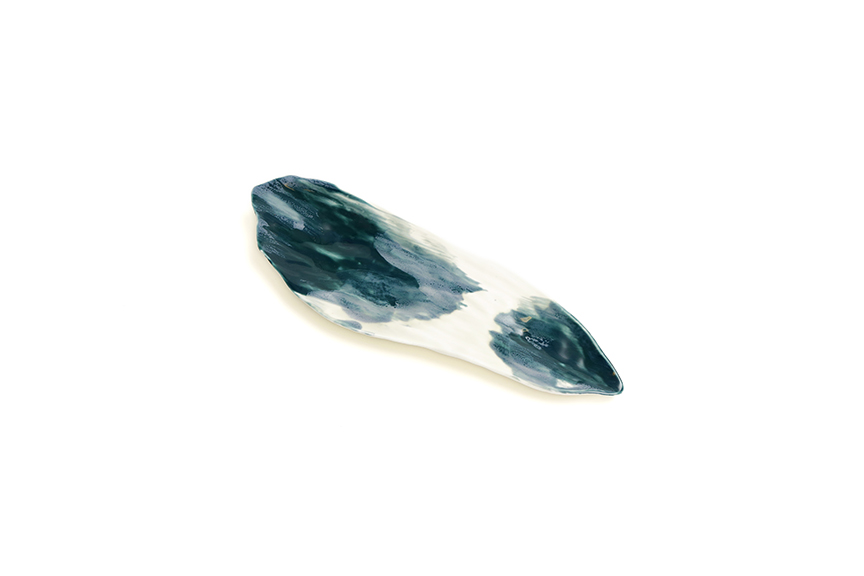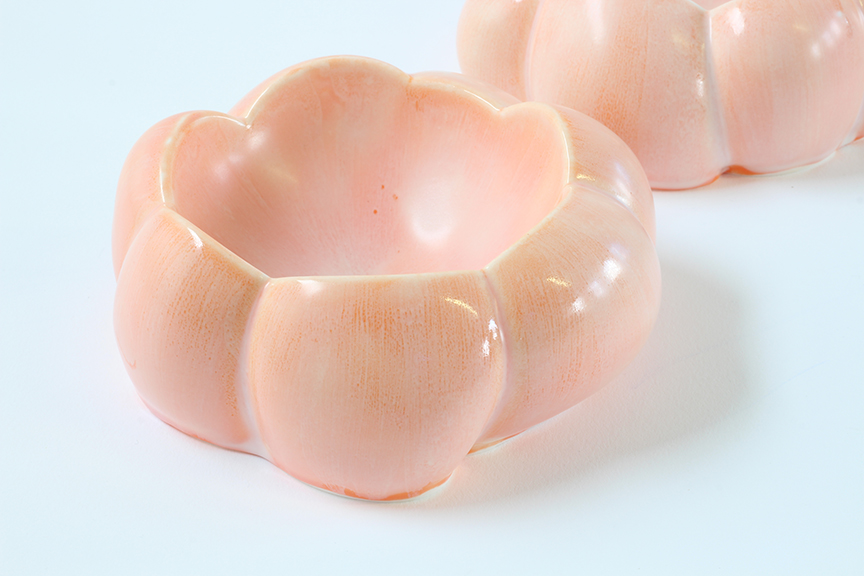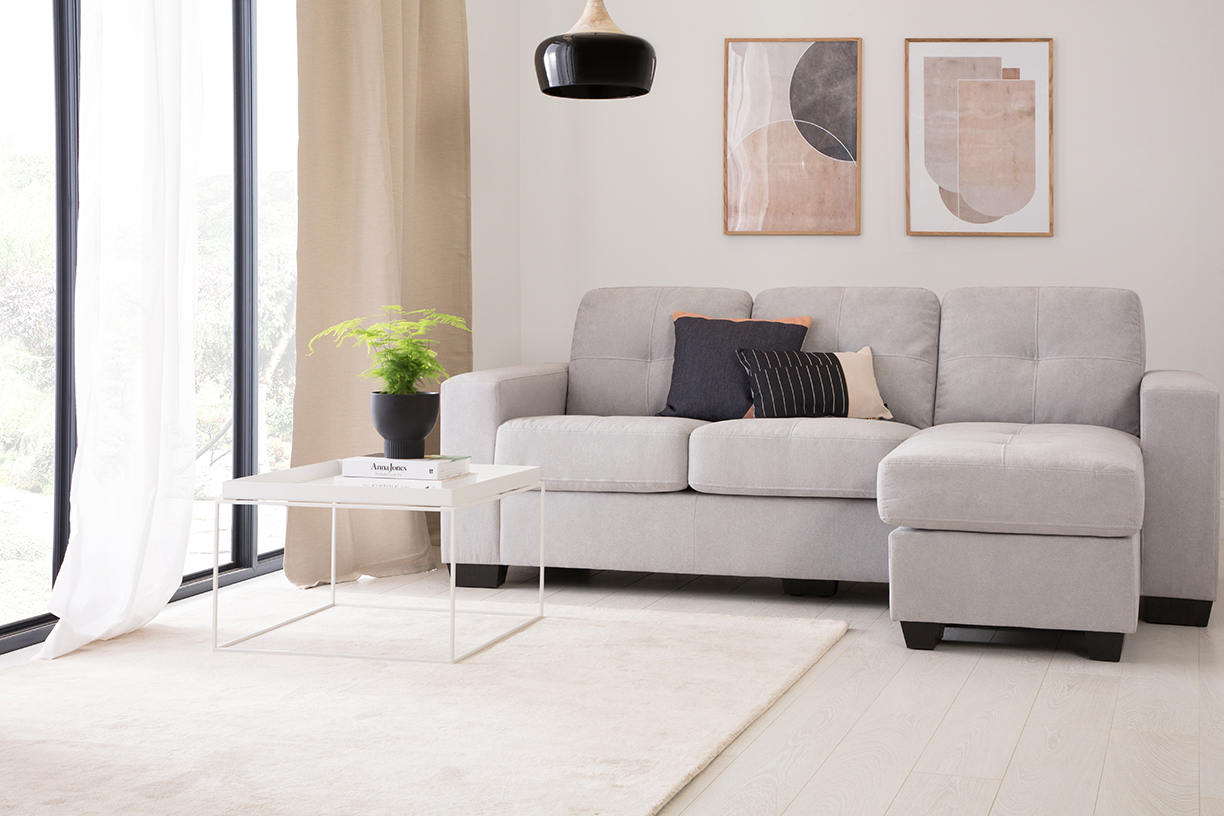
In a recent Furniture Choice survey of adults in Great Britain, minimalism has emerged as a favorite summer interior design trend, beating out other decorating styles like maximalism, jungle and tropical.
Rebecca Snowden, Interior Style Advisor at Furniture Choice, shared three tips to achieve the minimalist trend at home.
Keep surfaces clean and clutter-free
Based on the philosophy that less is more, minimalism is an intentional mode of living centered around simplicity. When aiming for this look at home, Snowden recommends to focus on clean lines and clutter-free spaces.
“Start by decluttering ruthlessly – eliminate anything that’s unnecessary and store belongings out of sight,” she notes. “In the living area where multiple activities take place regularly, make it a habit to clear surfaces daily. Keep a sofa feeling cozy with a couple of cushions and tidy up the coffee table for a clean look that feels relaxing at the same time.”
Other ways to reduce a cluttered look is to keep wall décor to a minimum, opting for pieces that are simple and streamlined. “A few pieces of framed artwork can add personality to the room and make it feel lived-in while staying on-trend,” Snowden says.
Stick to a neutral color base
At the heart of minimalist styling is a neutral color palette — subtle hues of white, grey, taupe and similar earth tones are calming and make a space feel fresh and clean. According to Snowden, the easiest way to add style to a minimalist home is to choose essential furniture pieces that contrast beautifully while keeping within the neutral colour spectrum.
“A white table with a sleek chrome finish lends a striking, modern touch and blends seamlessly into the overall look,” she adds, “If tight on space, get a round table with a pedestal base. Otherwise, larger spaces can opt for an extending table that’s practical and space-saving. Elevate the look with chrome-legged dining chairs that play up clean lines with a high back.”
Another way to make a minimalist home come to life is to place indoor plants within the space. “Greenery is often what turns a house into a home, and when it comes to this trend, plants can add warmth like no other. Keep it simple with a couple of potted greens or hang some air varieties that function as air-purifiers, as a bonus,” Snowden says.
Furnish and decorate with simple, clean silhouettes
The best way to furnish your minimalistic space is to focus on decorative pieces that are purposeful, such as a knitted throw for dipping temperatures or a minimal lamp for reading. As for centerpieces, a cushy sofa with a clean silhouette oozes comfort and makes a space feel inviting.
“Minimalist living is perfect for those who revel in clutter-free environments and enjoy interior design with a purpose. Display one or two treasured items instead of multiple small objects, and always pick pieces intentionally,” says Snowden. “Rugs are a good one — luxurious yet unfussy, and they double up to section off areas for different functions, while photos bring a sense of homeliness.”
Ultimately, Snowden notes being a minimalist doesn’t mean stripping all personality away — “it simply means that what does get displayed is thoughtfully curated and means a lot.”
All photos courtesy Furniture Choice Ltd.
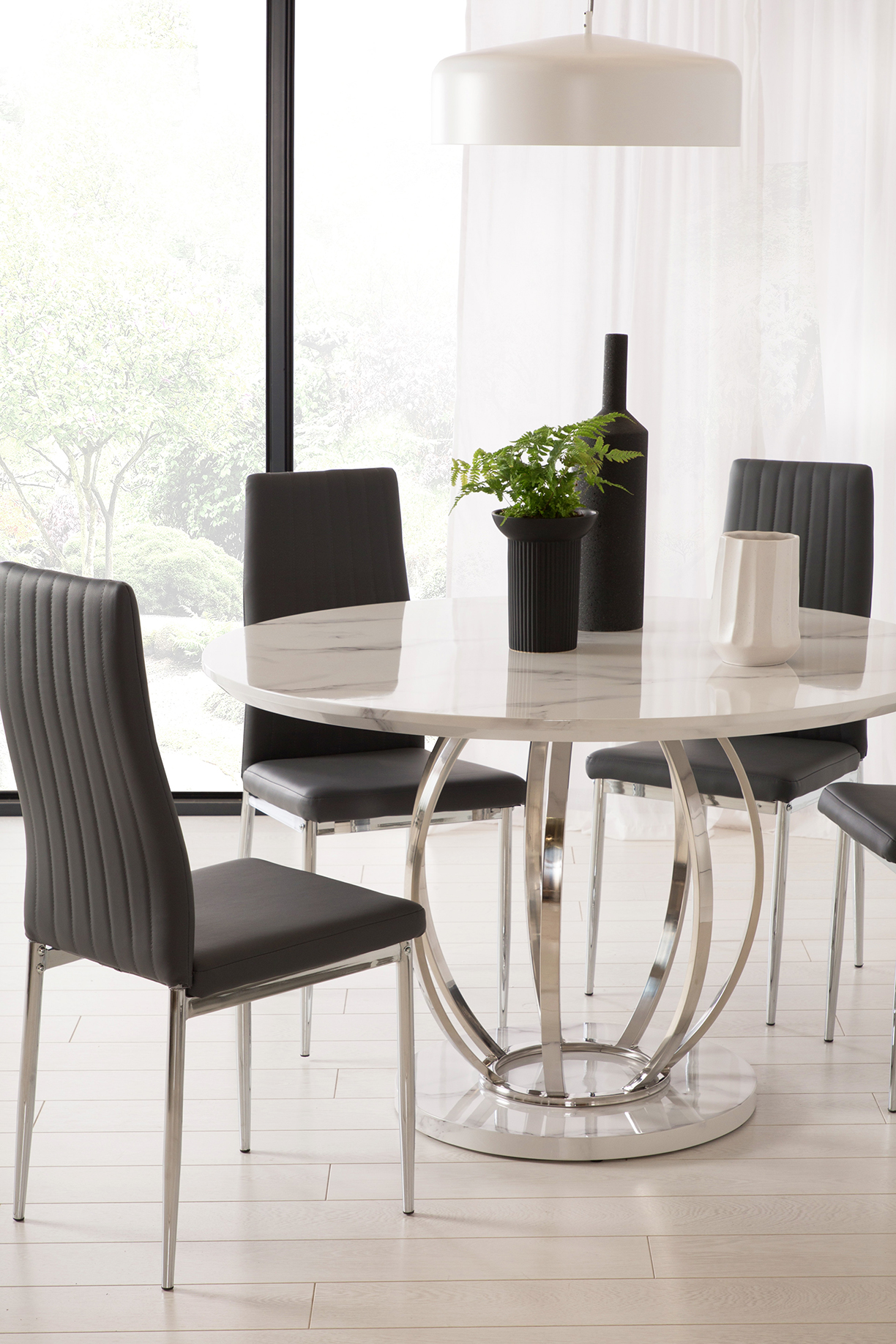
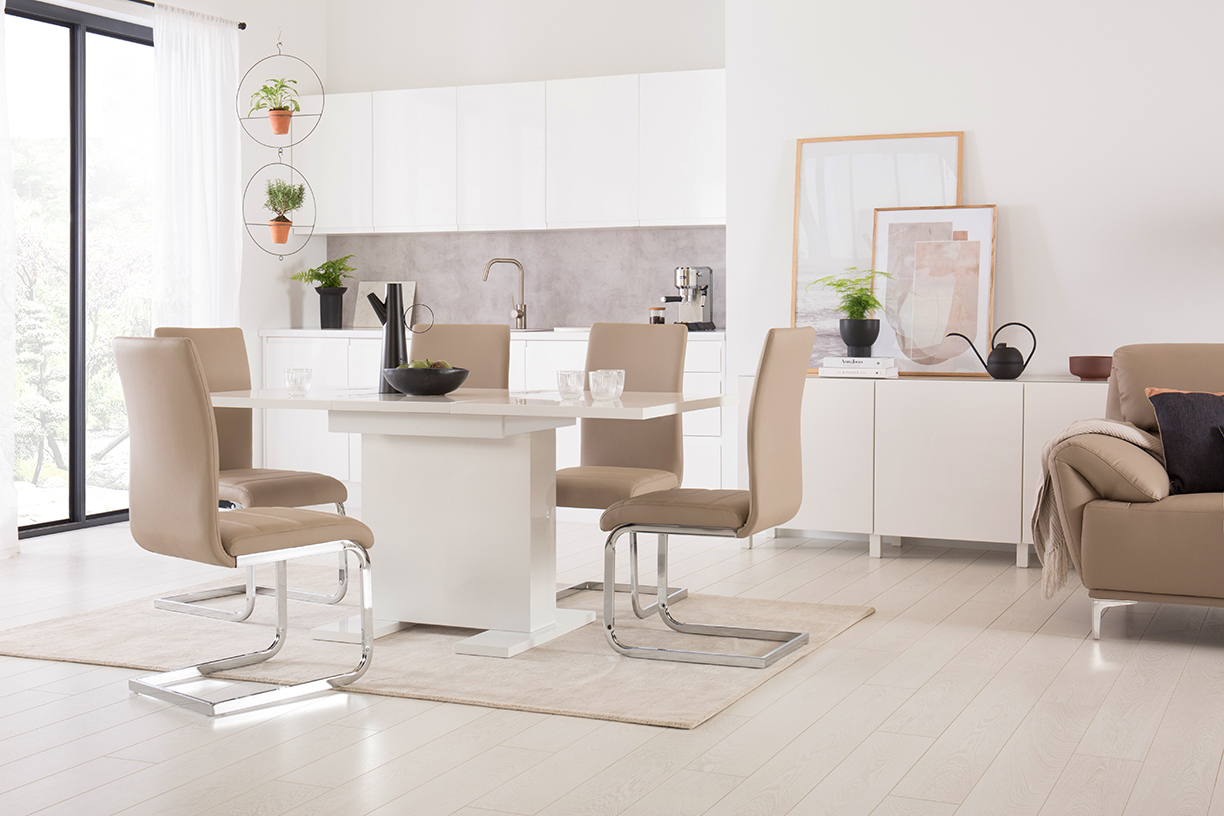
Enjoy the fun of Bohemian details and the comfort of mountain inspiration with the addition of some clean lines and modern finishes to achieve Bohemia Mountain Chic. These perfectly blended concepts will transform any space, whether it’s a penthouse apartment or a vacation ski-home in Colorado. Color, textures, patterns, and more will help bring the colorful ease that can already be found in Residence 501 West in Snowmass Base Village.
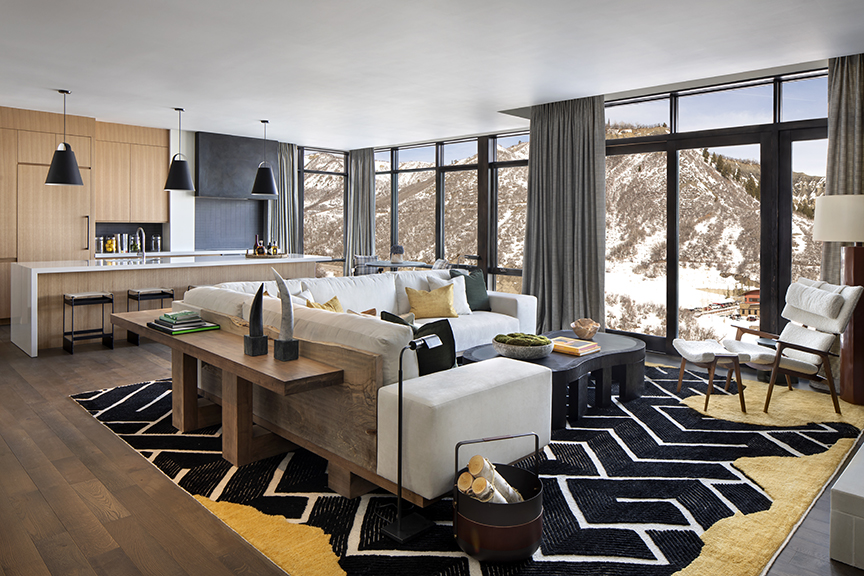
This style is undeniable fun and full of surprises, including a mixture of patterns and textures, pops of unexpected color, greenery, and calming tomes. The addition of natural materials, such as the various wooden surfaces have a way or working together rather than competing with other elements in the space.
Start with a simple base that will support your accents.
A neutral wall color may feel like a bland move but it creates a canvas for creativity around the room. A lighter shade on the walls will also give the impression of open space. This will also help if the space begins to feel overcrowded or busy.

Botanicals are a big part of any Bohemian look.
Natural elements, such as greenery are a great way to tie the outdoors and indoors together without flooding the room with oversized plants that are difficult to care for. A few plants displayed in a glass vase bring that little bit of life into the room. If there are large windows in the room the spattering of the outside is highlighted to add the perfect touch.
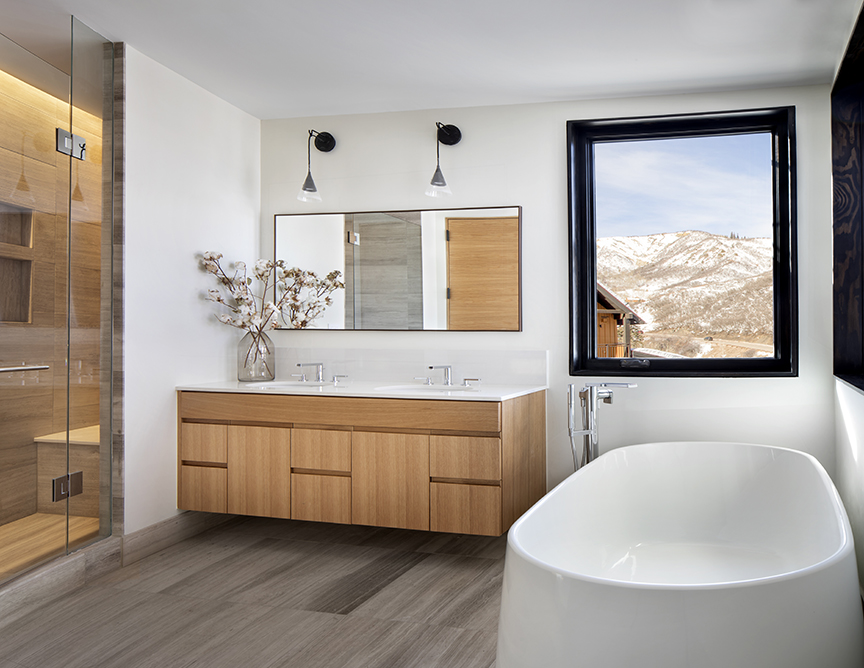
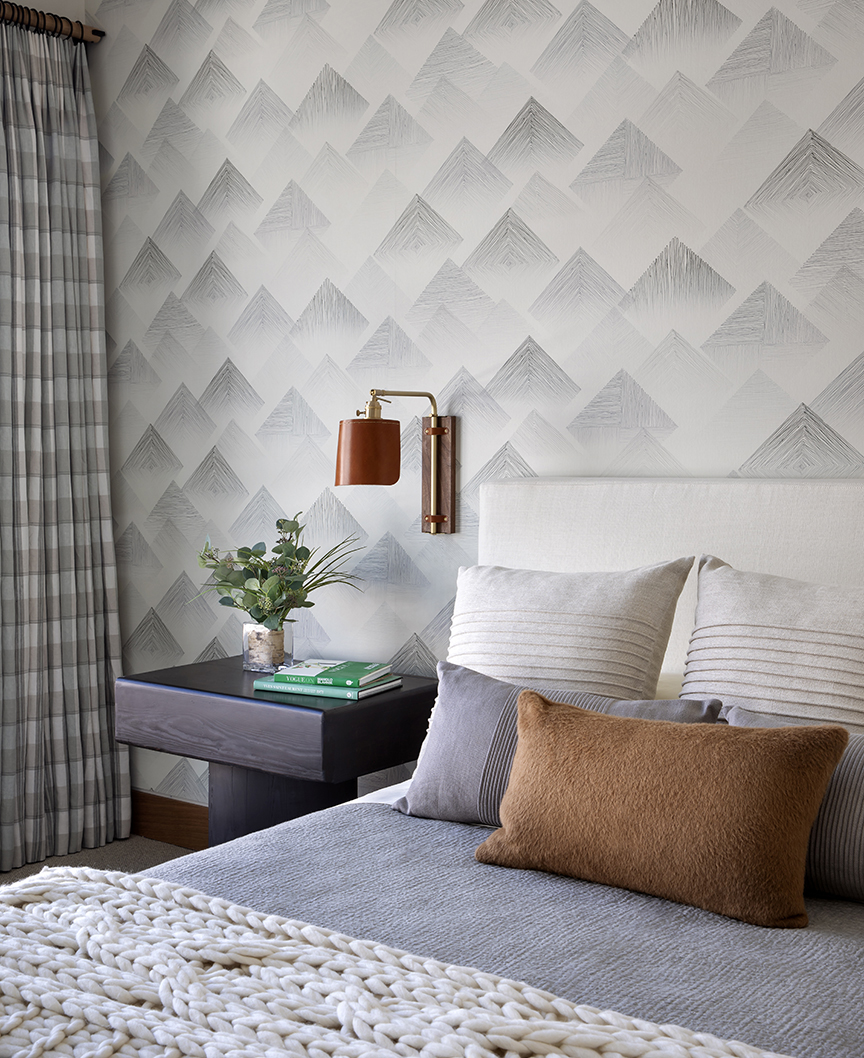
Get creative with patterns and textures.
It’s okay to mix and match in this situation. This tactic will not take away from the modern feel if it is done properly. Trying new textiles and fabrics offer up and opportunity for creativity. It can be surprising what colors will actually work well together. If the room begins to feel a little disjointed or unorganized, try using a neutral color scheme but in a variety of textures.
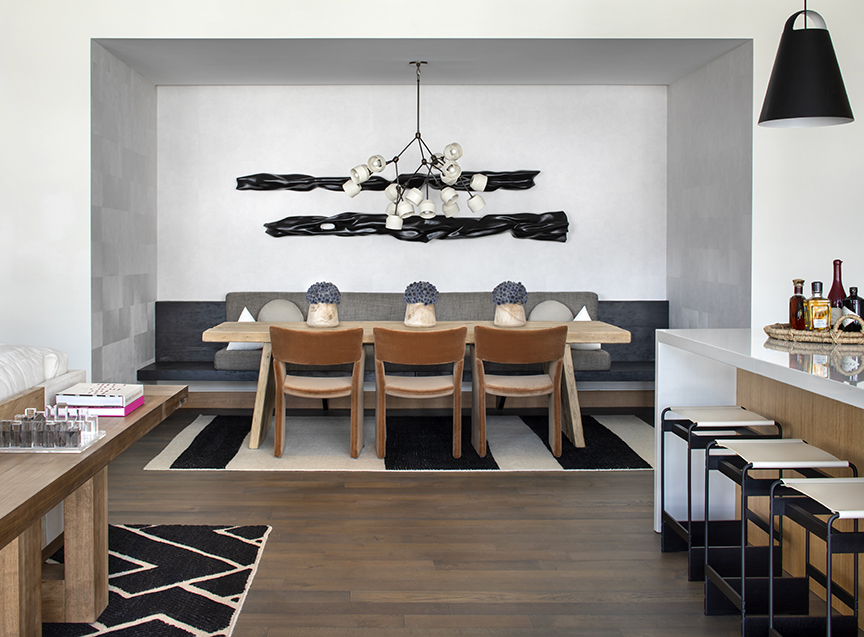
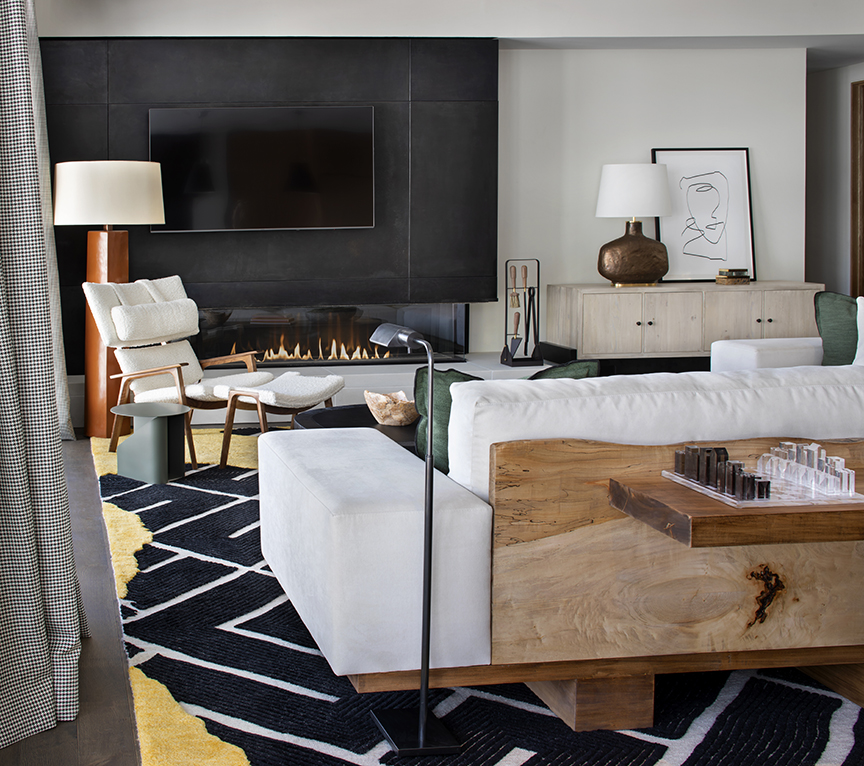
Other Tips
— Mix bright colors with metalic accents. Nothing makes color pop like a smooth reflective surface or a shining accent. This sleek nature also adds to the modern feel.
— Natural elements, such as a wooden table and some greenery mesh well with classic Bohemian details.
— Be bold with colors!
— Don’t’ be afraid to layer fabrics and materials.

Photos by Gibeon Photography
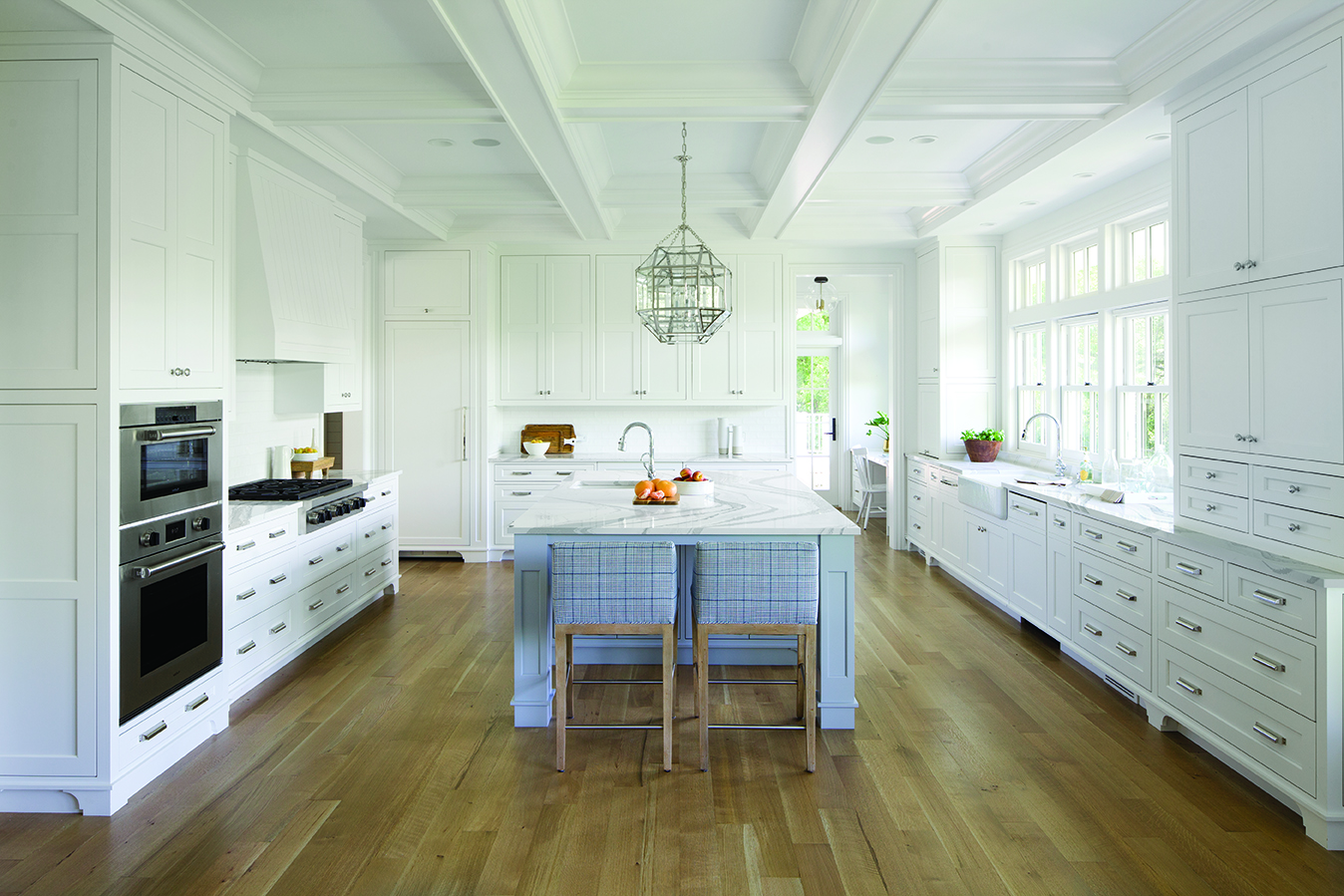
Top photo by Steve Henke for Cambria Style.
Cambria, the leading producer of American-made natural stone, is expanding its editorial platform this spring with the release of its first-ever workbook supplement, Kitchen & Bath Design Inspiration: The Ultimate Design Planner. The Planner will be bound within Cambria Style, the brand’s award-winning luxury home and lifestyle magazine, and will also be available to consumers for free download online at CambriaUSA.com.
Part inspirational guide and part project checklist, the Planner was designed by LouAnn Haaf, editor-in-chief of Cambria Style, and her team as a comprehensive guide to help consumers navigate the often complex process of renovating their home. The new supplement illustrates top kitchen and bath design trends, including features on popular styles and product roundups of fashionable accents and accessories. It delves into the most functional and popular kitchen floor plans, providing tips for planning the perfect layout, selecting the right materials, colors and finishes, and includes designs from Cambria’s expansive palette in both elegant neutrals and bold patterns.
Haaf combed through her vast experience in covering the kitchen and bath market to create the Planner, which provides invaluable takeaways – both creative and practical – including the following:
Find Your Look: Whether it’s the blend of modern farmhouse and West Coast styles of California to the picture-perfect sophistication of a classic Hamptons retreat, it’s important to find the right types of inspiration that emulate you, while staying modern and fresh. Cambria recommends trying out or investigating on-trend styles to inspire your own projects, such as the Into the Woods aesthetic, combining industrial materials and an urban look to blur the lines of interior and exterior.
Know Your Pro: Consider your options when it comes to choosing and working with a professional, which in turn will help take the guesswork out of kitchen and bath design.
Draft Picks: Lay out all your designs carefully, and make sure all options are weighed when designing your dream kitchen, and which one is best for you.
Splurge-Worthy Investments: Take a look at the five areas of your renovation where you shouldn’t cut corners on spending and why.
The 3Cs Buying Guide: Color, Cabinets and Countertops – the magical trifecta to incorporate color, storage and durability into your kitchen.
Surface Area: Make sure you select a surface that showcases your personality, making your house a home. Cambria offers a multitude of options, from the inky blacks and soft-gray hues of Midnight Blacks, the classic, understated earth tones of Organic Neutrals or the dramatic selections of Edgy Movement that tend to make a statement.
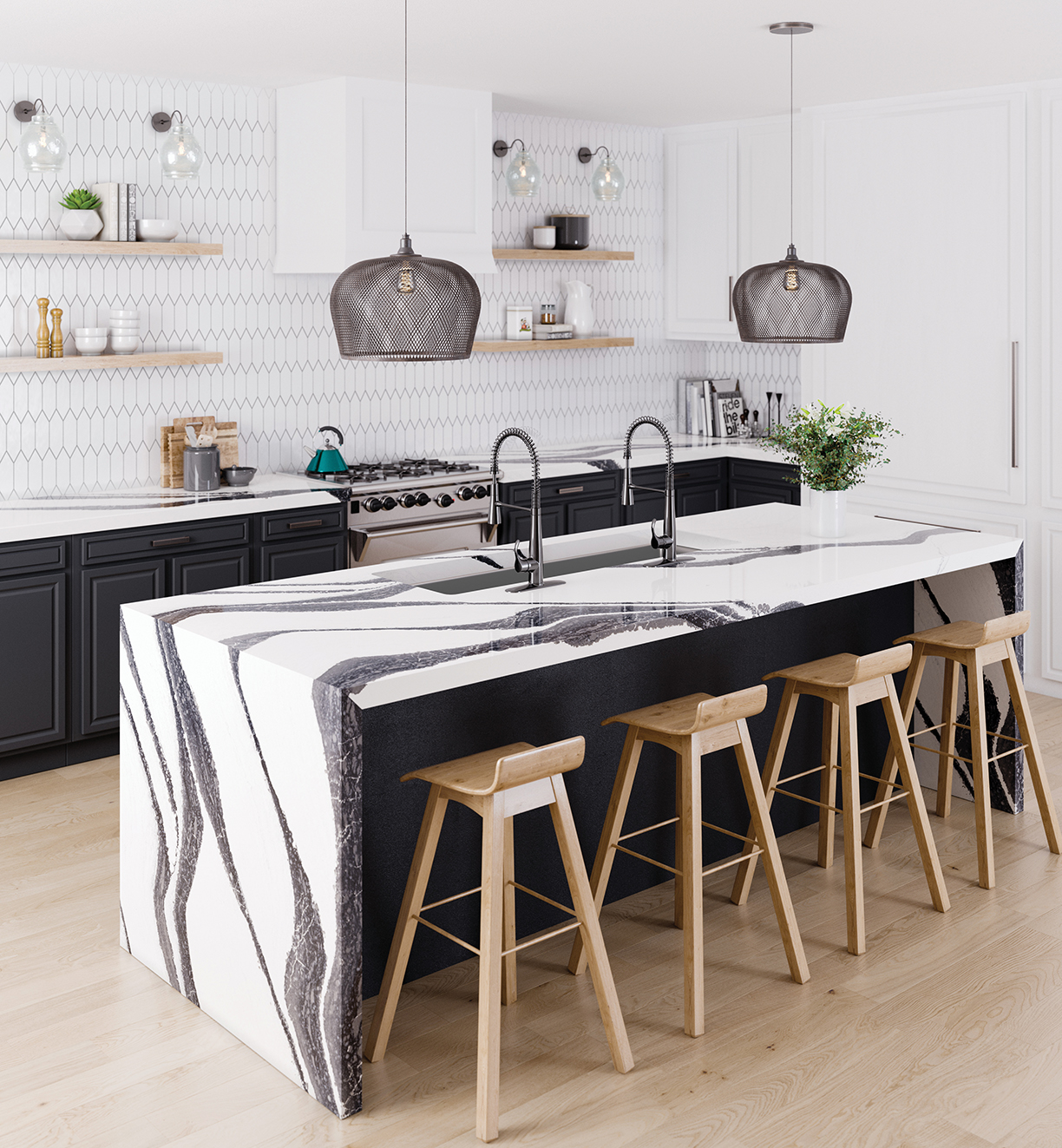
Photo courtesy of Cambria.
The magazine, along with the removable Planner, will be available on May 7 through Hudson newsstands, select Barnes & Noble stores, in hotels, by subscription and for free download on CambriaUSA.com.
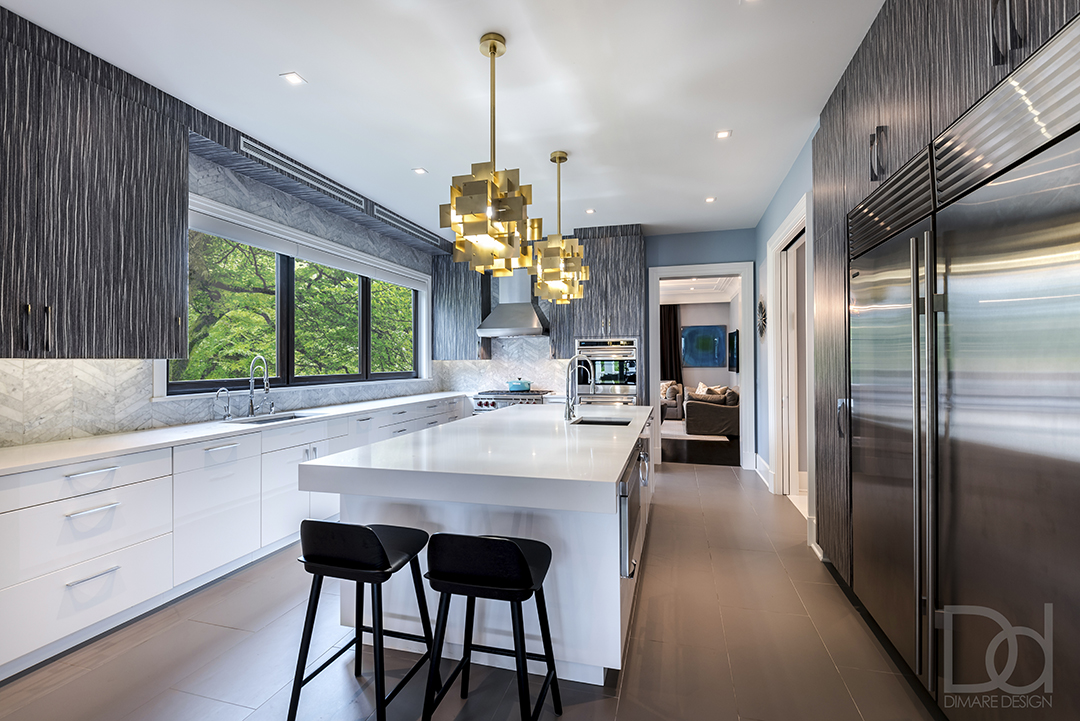
“The place we live in can and should do three things: reflect who we are, bring out the best in us, and contribute to a better world.”
This mantra is the basic, driving principle behind the work of interior designer Deborah DiMare, founder of DiMare Design in Miami as well as VeganDesign.org, two businesses that strive to create a healthier world and save animals. We spoke with Deborah DiMare who discussed everything from her passion for vegan interior design, her daily inspiration, and her new book titled “Vegan Interiors.”
What image comes to mind when you think of vegan design?
I imagine ultra luxury such as a beautifully made crisp white bed or a fabulous living room with beautiful sumptuous fabrics. The feeling of any vegan space should always emit good health, comfort, happiness and an overall “feel good” environment, a space you never want to leave. Vegan design focuses on optimal health and well being.
How did you come to be a designer, what led you to this career?
How I became a vegan designer was initially from the love of animals that my family and I share. Animals are a very important part of our lives. We also do our best to maintain a healthy, optimal lifestyle. We are very active and love nature. When I discovered the term “dog leather,” it was a pivotal moment for me personally and professionally. … It changed me, It had a deep effect on me. How could I continue to be such a hypocrite? … I did a 360 in my business and refused to continue designing spaces with products originating from animals.
Vegan design is not just about saving animals. It’s about putting an end to the inhumane treatment of desperate people forced to work in dangerous, deplorable conditions. It’s about saving the planet. It’s about healthy design and well-being. Animal based textiles and materials such as leather, wool, silk, fur, down and treated woods etc. are laden with poisons and toxins that penetrate our skin. Thankfully, today, consumers are demanding compassionate, healthier alternatives in a majority of industries.
What do you think are some key things to remember when outfitting a home with vegan design stylings?
Use as many natural materials as possible — cork, linens, bamboos and blends. Keep it clean and as low on toxicity as you can.
Where would you draw inspiration from when outfitting a home in this style?
Everywhere, everyone and everything. I travel a lot with my family and I soak up the architecture and materials I see in other countries. I get inspired by the color of the ocean on a gray day or the way a woman’s red lipstick looks against her skin, or even the blue spot on my dog’s eye. Everyday life inspires me. But, most importantly, getting in tune with my clients is my true inspiration. … Starting new projects is like detective work. I have to uncover a client’s true needs and taste. It’s so much fun.
Tell us about your book and what readers can expect from reading it?
“Vegan Interiors — Home Edition” is a first of a series of books that focuses on the beauty of humane design. The book is filled with stunning images portraying compassionate design as luxurious and healthier for everyone from newborns to seniors and simple to embrace. It provides facts about how many animals, workers, trees, etc. are saved in each vegan room or piece of furniture. There are pages dedicated to the future of textiles. “Growing materials” are fabrics made out of fruits and trees that will be readily available to consumers soon enough. “Vegan Interiors — Home Edition” is a beautiful way to show others through demonstration and education that no living thing, including humans, animals and the planet need sacrificing for beautiful interiors.
All images courtesy VeganDesign.org
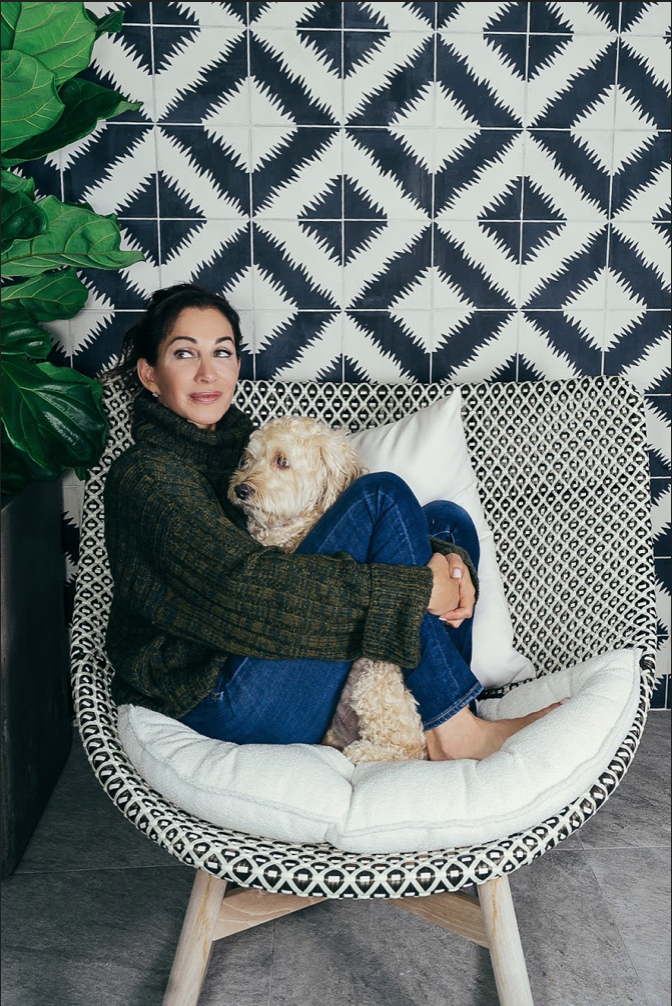
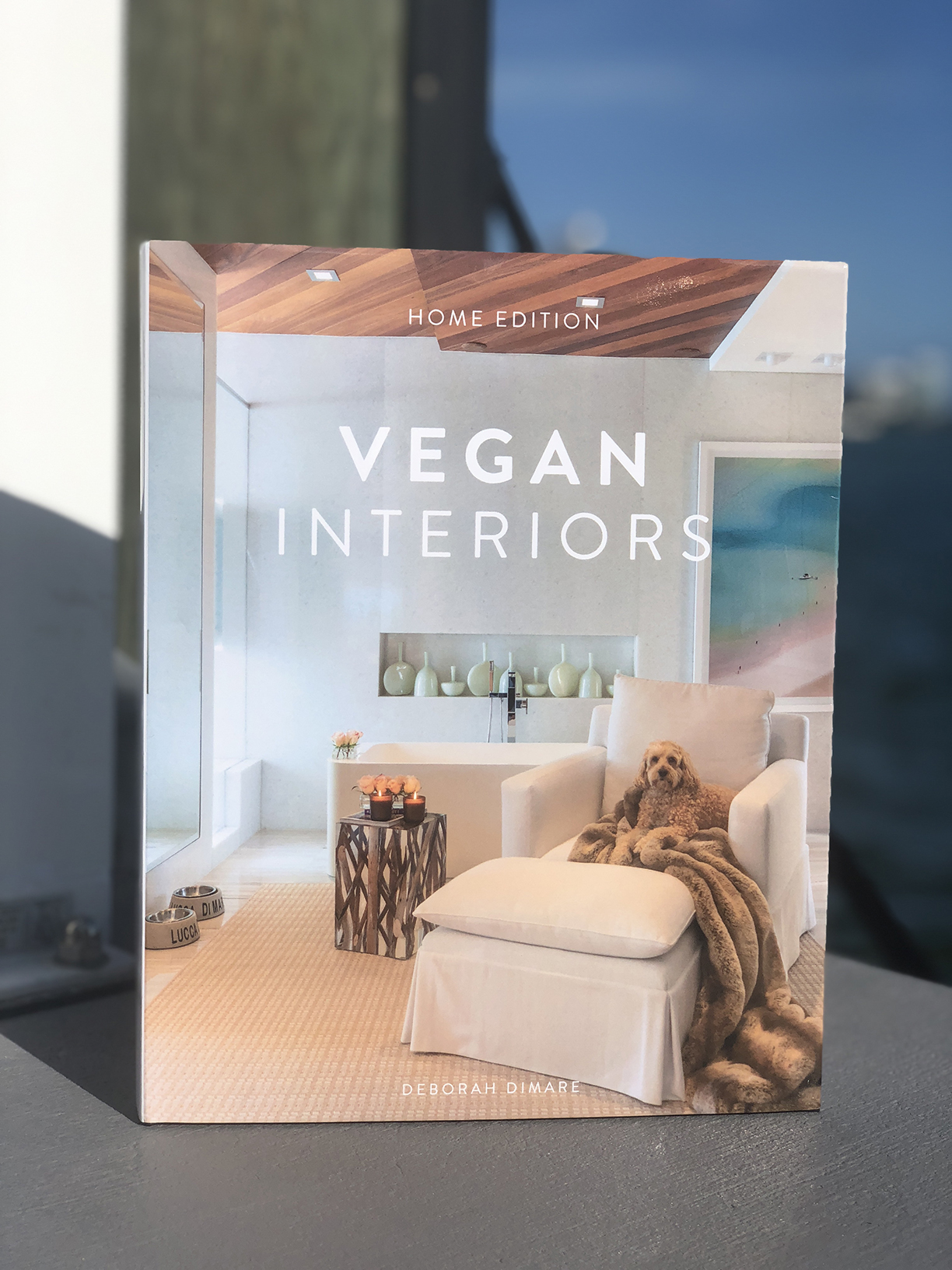
Whether you’re purchasing a new home or revamping your existing space, there are many different facets of decor theory to consider. One of the most important decisions to make is which colors you will utilize, a decision that will set the mood for your home. The savviest of designers and homeowners will consider the science of color, and further the psychology behind the way our brains interpret different hues and shades. When selecting a color scheme, it’s wise to understand the way these colors will make us feel. Whether working with shades of passionate red or warm tones of yellow, experts at Arhaus, an interior furnishing company, offer great tips on how to execute knowledge based on color psychology in interior design.
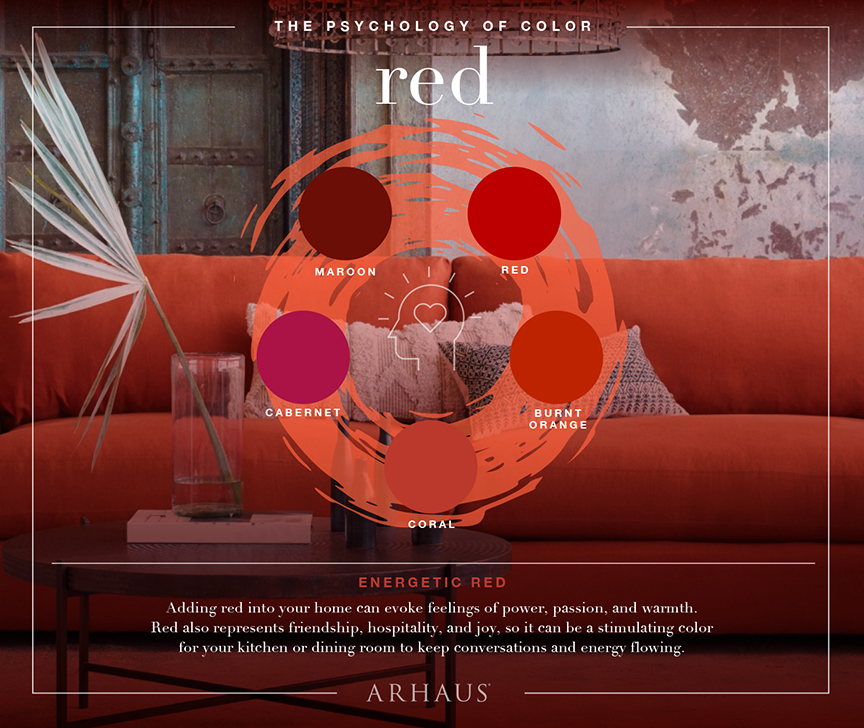
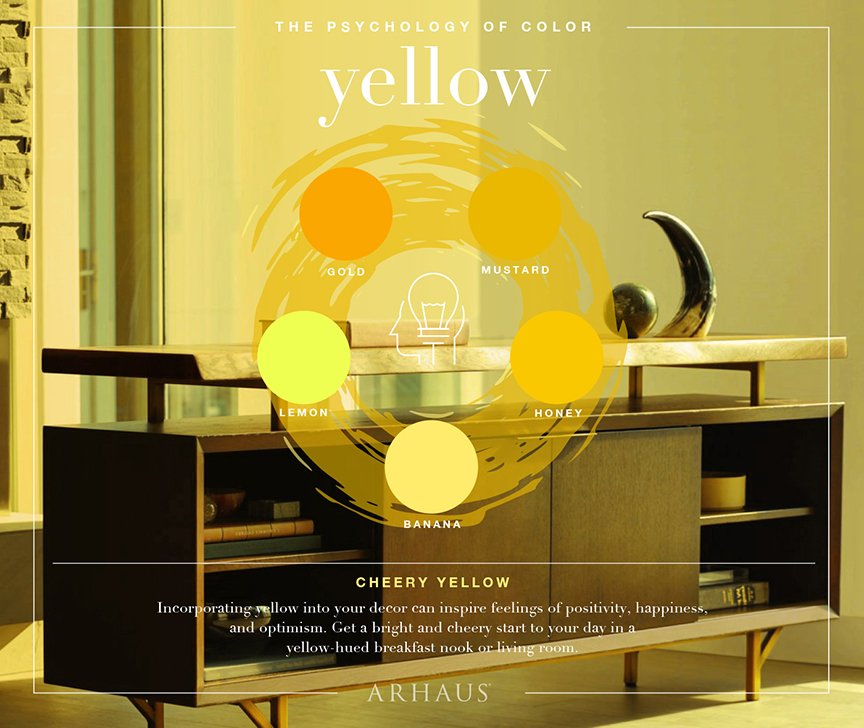
Start With Walls
Rooms with the absence of color, especially stark, white spaces with oppressive lighting, can make us feel uncomfortable. We have definitive reactions to color, especially on a subconscious level, so it is important to factor this in when deciding the layout and color scheme of room. Starting with the walls, try and think about the room’s intended purpose, and decide on paint color from there. Is this going to be a living room where the family relaxes as the long day is winding down? Or perhaps it’s a bedroom with a luxurious view of rolling hills or a coastline?
Due to the way that our brains process color, you will want to select a color that will promote a certain mood. Blues and greens can offer a feeling of relaxation, especially in rich, warmer shades. Blue is especially desirable in the bedroom as it can promote calmness and aid in sleep. Green traditionally is perceived as familial, which can be a great choice for a living room. Adding supplementary furniture, such as a patterned sofa or loveseat, can add to the mood of the room and help it become the ultimate room to spend time with the family.
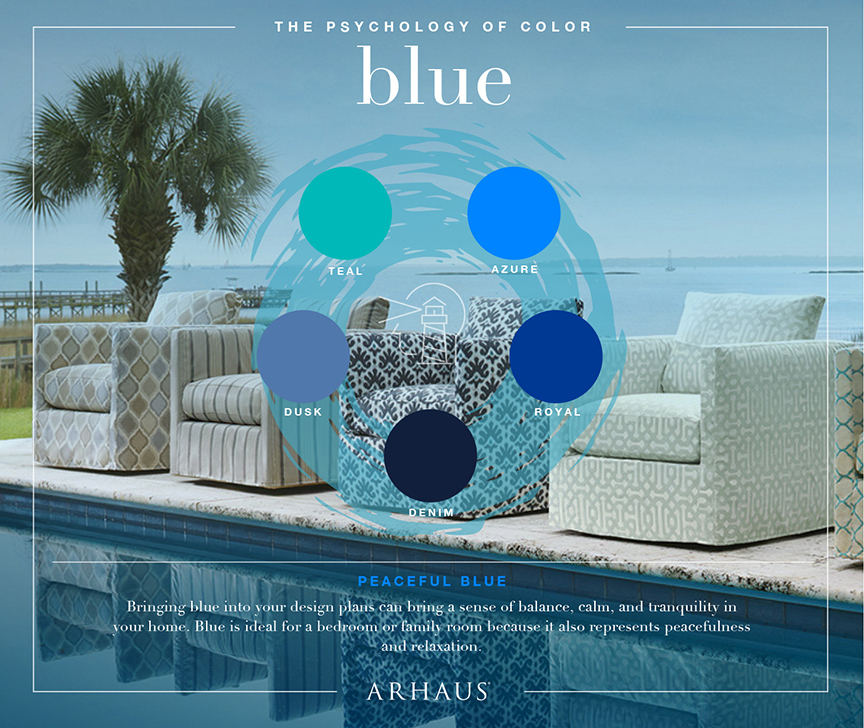
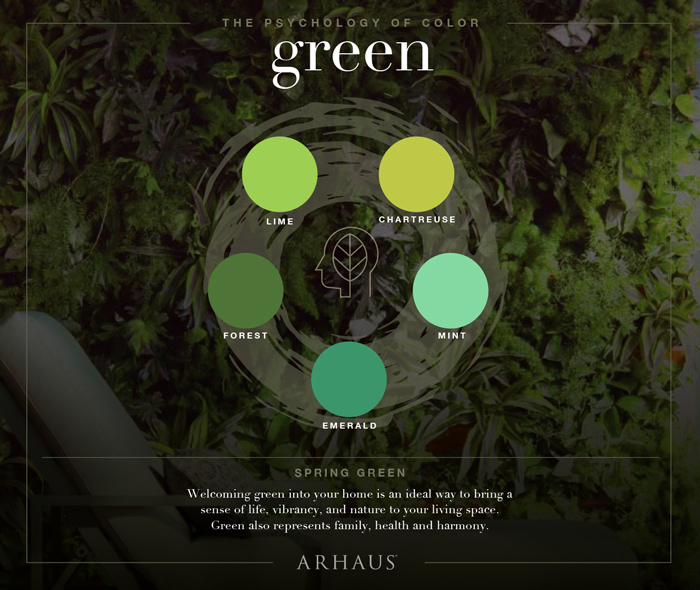
Stock the Room
Surely, a chic and luxurious home will need furnishings; we can’t just live in an empty house! It is important to “stay within the lines” regarding furniture and decorative pieces. If you’re going for a rustic, mountain vibe, an abstract, post-modernist painting surely won’t pull the room together.
We can generally rely on our intuition when it comes to design, and when all else fails, go with pieces that you like! With that said, we must consider each item within the context of color scheme. Neutral colors, like browns, blacks, and grays, can be used to balance a room. Consider a brown or black exterior surface (especially fine cabinet wood), which can help to offset the color profile and bring the room a more subtle, cohesive look. A black bookshelf with matching end tables beside a deep burgundy wall can exude feelings of passion, warmth, and creativity – perfect for a den or a studio.
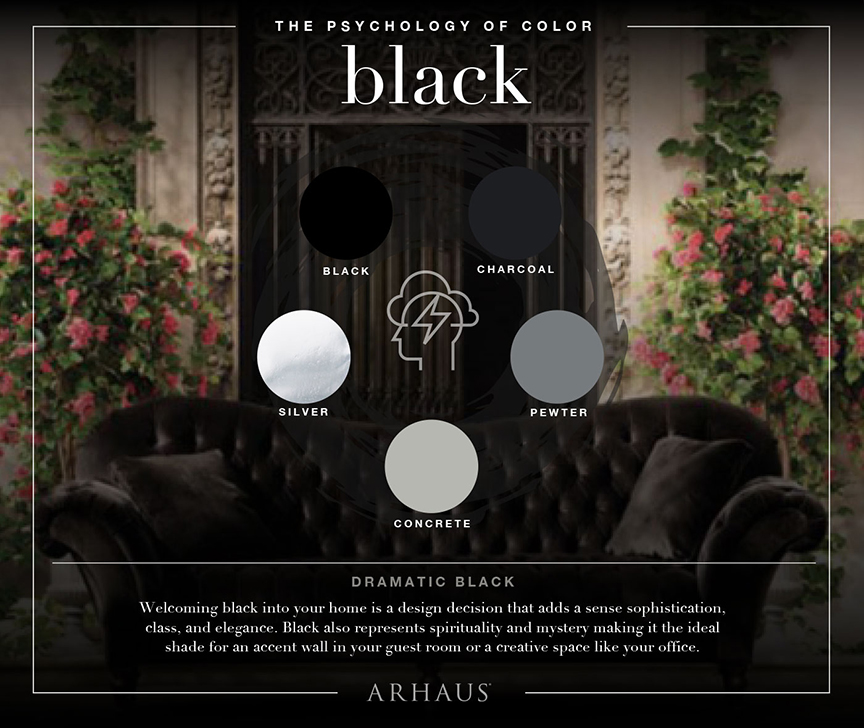
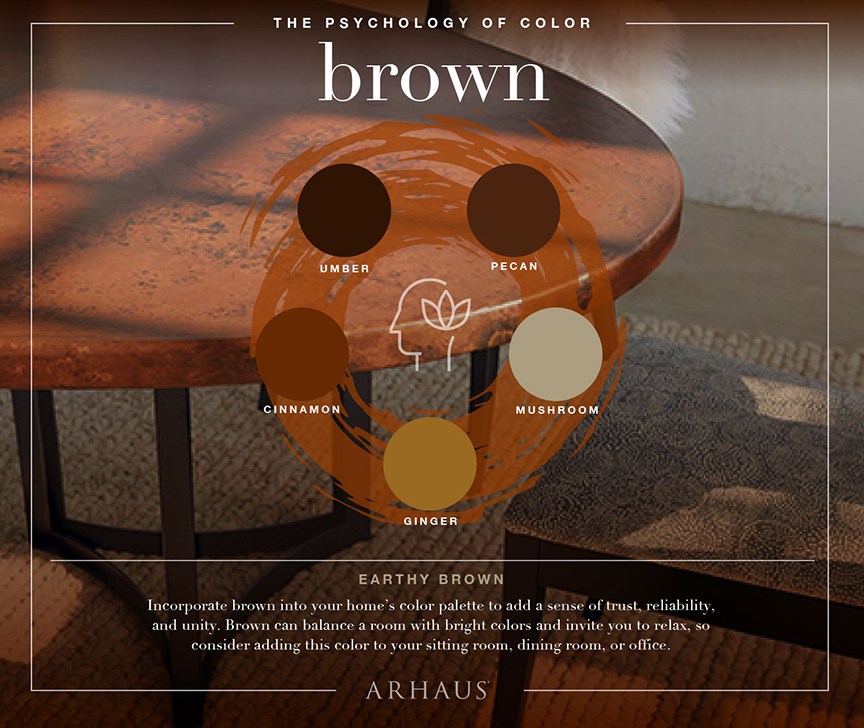
Finishing Touches
Once you’ve got the room essentially put together, with your color scheme well-solidified, it’s time to add the final touches and make it truly your own space. An excellent way to add a personalized element to your home is through old family heirlooms. Now, we’re not talking your grandmother’s prized Waterford crystal china, but an old quilt she made years ago can add a cool, retro feel to a room – while simultaneously honoring your family and heritage.
The same sentiment rings true for artwork, such as paintings or sculptures. A fine piece of art can add an element of sophistication and elegance to any room, but try to avoid heavy contrast between your room’s color scheme and the paintings! Once you’ve personalized your space and implemented colors you love, you will be ready to enjoy it for years to come.
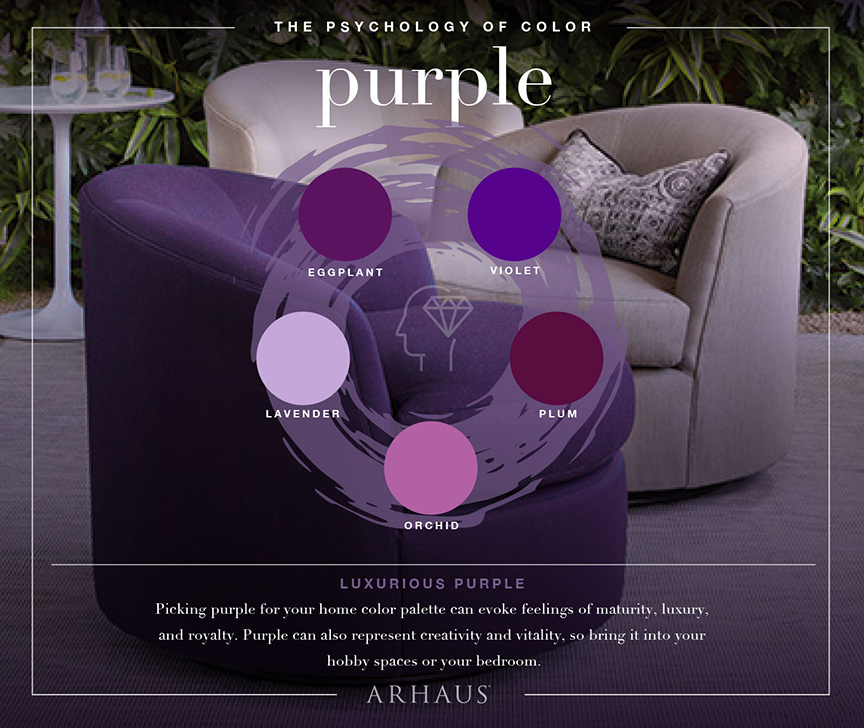
Imagery courtesy Arhaus.
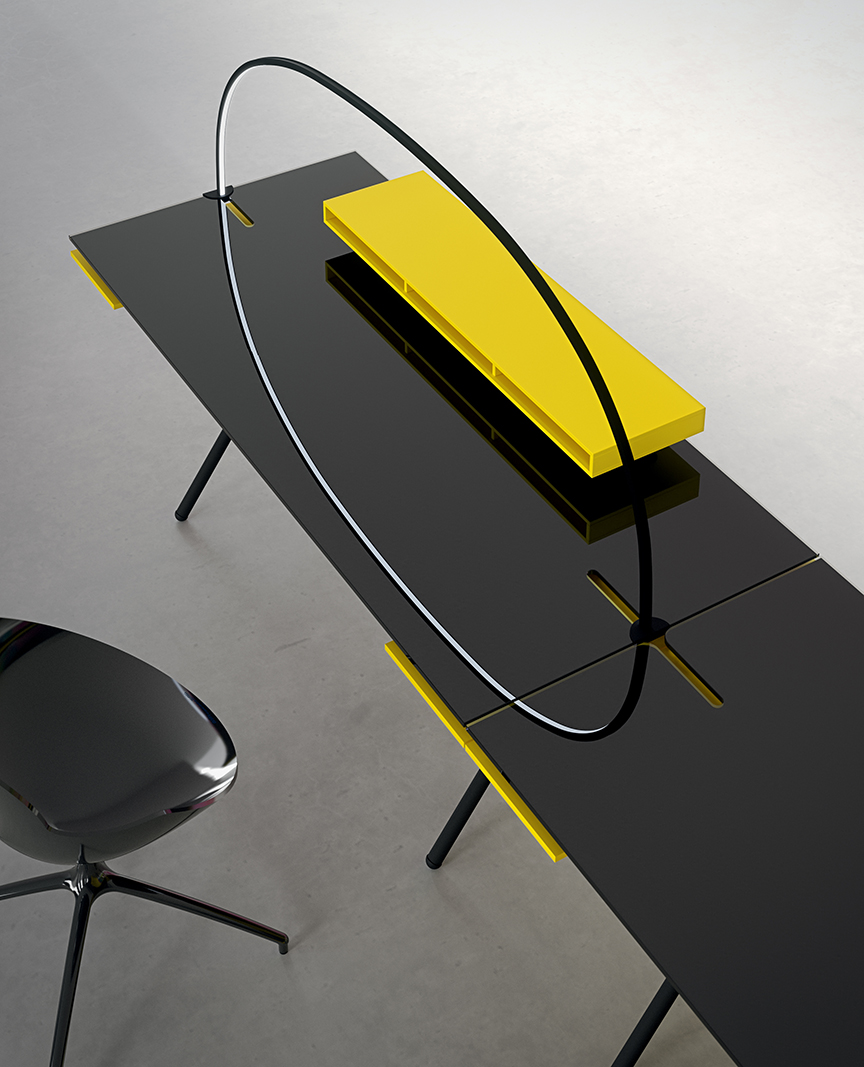
A new line of pop art furniture will brighten your office space.
A result of the extravagant, colorful and recognizable signature of designer Karim Rashid, Hook is the newest collection of modular furnishings by Newform Ufficio designed to instill positivity in the workplace.
“The office space should be comfortable and give inspiration like home, only with less distraction,” says Rashid. “An office should give a sense of freedom, personalization and sharing at the same time.” To reflect these ideals, Rashid’s collection incorporates touches of color, pop art work and simple divisions that create a private environment in line with the parameters of the common work space, making small workrooms obsolete.
The desks are the nerve center of the collection around which all the elements are developed. Each desk can be customized in terms of finishes and colors, and can also include a second, entire or shelf-sized top to store files, small books and/or hide cables. Under the worktop it is possible to insert a second, entire or shelf-sized top, to place diaries, documents or files, but the space also useful for managing and hiding cables. There are also drawers, special modules to insert hard drives, shelf systems and small load bearing shelves to replace thin metal legs. To free the tables from any unnecessary clutter, Rashid and Newform Ufficio have created LED lamps that spread a pleasant ambient light of the entire length of the desk.
To create workstations made up of several desks, a series of translucent screens and side panels allow both privacy and collaboration, as well as open up the space between workspaces. “I believe that the fluid, clean and bright spaces promote an active working life and that an office of this kind will lead to a better and more gritty work in return. My collection for Newform Ufficio embodies this spirit,” Rashid adds.
“Design has been the cultural shaper of our world from the start,” he notes. “We have designed systems, cities and commodities…. Now design is not about solving problems, but about a rigorous beautification of our built environments. Design is about the betterment of our lives poetically, aesthetically, experientially, sensorially, and emotionally.”
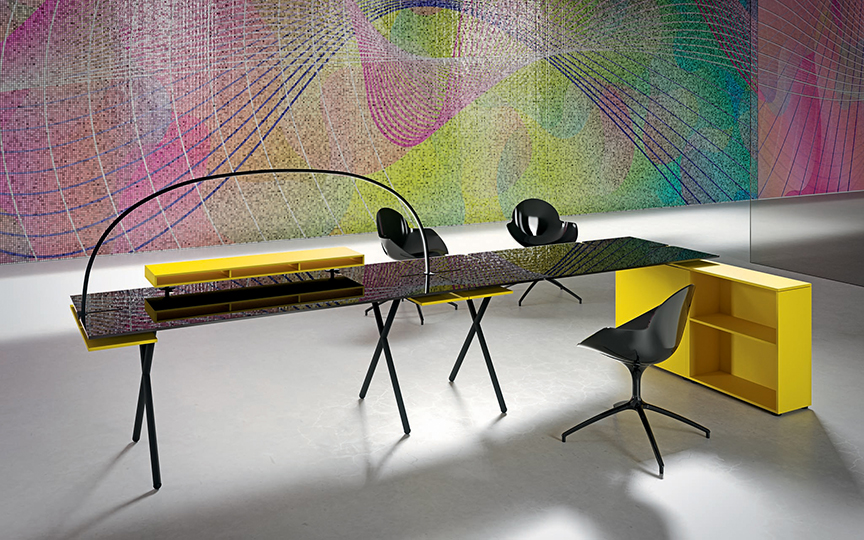
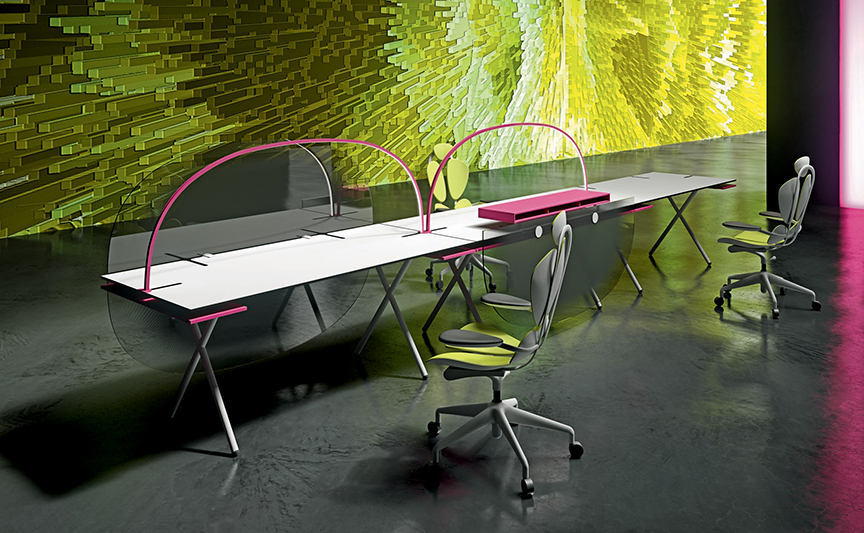
All photos courtesy Newform Ufficio.
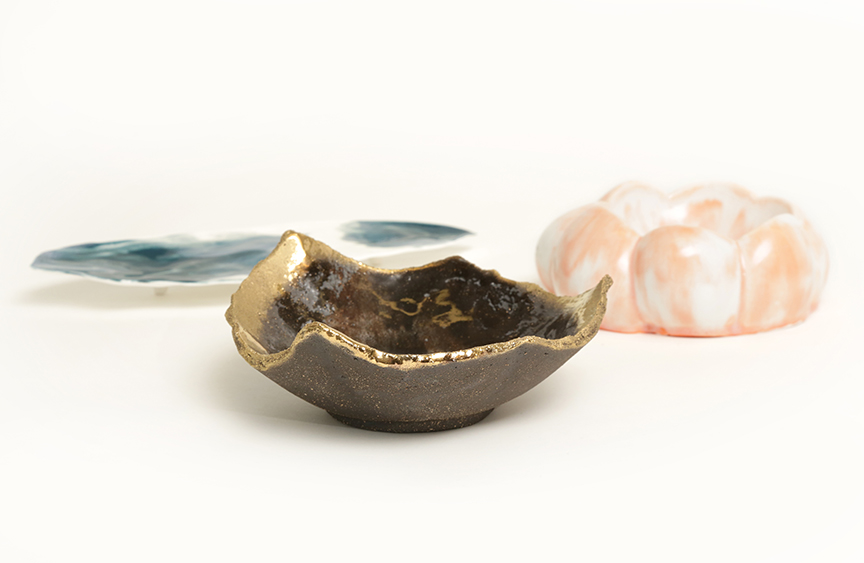
All photos courtesy NEFF.
Home appliance manufacturer NEFF, renowned for its passion for cooking and intuitive kitchen appliances, has partnered with UK-based ceramicist Reiko Kaneko to create a unique set of plates that enhance the flavor experience with a richer taste sensation.
The inspiration for this collection was taken from Professor Charles Spence’s groundbreaking research into the field of gastrophysics. Looking into various elements that contribute to a memorable eating experience, Spence has partnered with NEFF to uncover how the colour, shape, texture and even weight of crockery can intensify the flavour perception of food.
“Our brain plays tricks on us about what our taste buds are tasting,” says Spence. “There have been experiments showing that eating popcorn from a blue bowl tastes saltier than from a white bowl. Similarly, when it comes to shape, an asymmetric, angular plate can bring out the sourness and acidity of food much more than a round plate does.” Spence explains that working with NEFF to apply some of these principles to Reiko Kaneko’s plateware has been a really interesting challenge and opportunity to see the gastrophysics insights used as inspiration for plateware design.
The exclusive plate collection consists of three plates that have been specially designed to heighten the taste of each stage of a meal, for an ultimate dining experience. You can see the development and process behind each vessel below.
Reiko Kaneko, the ceramicist behind the creation of this set of plates, has been fascinated with the dimensions of taste since she discovered Spence’s work. “Playing with colour, shape and texture with the goal of ultimately influencing how diners will taste food has opened up a lot of creative avenues, which are reflected in my design,” she states.
Maria Beltrán, Head of Communication NEFF, says “Gastrophysics has opened our eyes towards a different world of ‘ingredients’ that come into play well after the food has been cooked: the elements that impact how food tastes when it’s being served. We hope that our plate collection inspires passionate foodies out there to be even more adventurous with their flavor experiments.”


